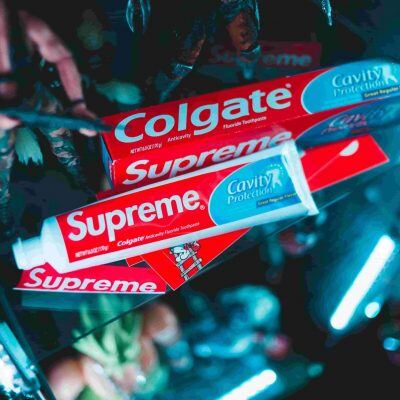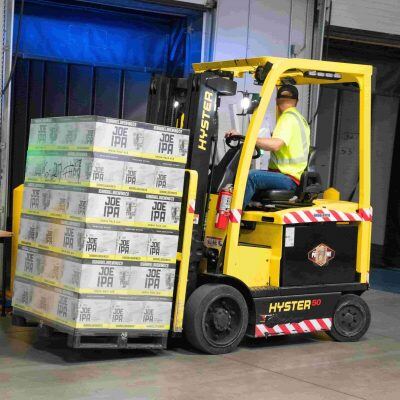In the dynamic landscape of modern marketing, advertising research stands as a cornerstone of successful campaigns, offeringfalse

Creating a viable identity is important. But if no one knows about your brand or what you stand for, then you have a significantly reduced chance of being selected for purchase.

When a consumer walks into a shop ready to make a purchase, they will have one or two brands in mind that sell the product.
In most cases the brand they already have in mind will be the brand they purchase. This is brand salience in action, and if you can entrench your brand in the mind of the consumer prior to purchase, then you will have won a significant marketing battle.
But what exactly is brand salience and more specifically, how does it differ to brand awareness?
Read on to find out…
What is Brand Salience?
When marketers talk about “brand salience”, they are referring to the:
Proportion of consumers that are thinking about and considering their brand when they are in the process of purchasing a product.
An example of this could be the brand of toothpaste chosen by a consumer when shopping at the supermarket. Walking into the supermarket, the consumer might have the brand ‘Colgate’ on their mind.

So, when they get to the toothpaste shelf, they would most likely be looking for the Colgate logo and range of products.
They may not always choose the Colgate brand. For instance, they may see another brand they have heard of that is on special and choose that instead.
But in most cases, a consumer will either choose the brand they expected to purchase, or another brand whose saliency is strong. (i.e. would be trusted and in the consumers’ consideration set)
How Does Brand Salience Differ from Brand Awareness?
Whilst brand awareness and brand salience may seem similar, they measure different levels of consumer commitment to a brand.
- Brand awareness is a top of funnel metric that measures more generally if consumers know your brand. Put simply, brand awareness measures whether people have or have not heard of your brand. What it does not do is measure how committed a consumer is to your brand and are likely to feature at the time of purchase.
- Brand salience is a bottom funnel metric. As alluded to earlier, it measures how prominently you feature in the consumer competitive set at the time of purchase.
Why is Brand Salience important?
On any given day, consumers have a multitude of decisions to make in their lives. Some of these decisions, for example relating to work and family, can have far reaching consequences and require a lot of thought and consideration.
When it comes to purchasing goods and services, consumers rely (often subconsciously) on brands to do a lot of the heavy lifting for them.

The purchase journey becomes a lot simpler for consumers when they know of a brand or brands that can provide what they need, and they can trust that their products will deliver.
If a consumer knows and trusts your brand, then it means less time researching their purchase choice. And therefore more time for the other important decisions they need to make.
How Do You Measure Brand Salience?
There are a variety of ways to measure brand salience, but one of the most common and simplest is to include a saliency metric in your brand health research. This should be administered to consumers in your target market.
You could incorporate a question in your brand health research such as, “What is the first brand you think of when you need to buy (e.g. toilet paper)?”.
You can also ask consumers an unaided brand awareness question and pay particular attention to the first brands they mention. First brands mentioned are usually the first consumers would think of when in a purchase situation.
You know you have strong Brand Saliency when more people naturally think of your brand as a purchase choice than your competitors.
Brands that are truly winning this metric are those whose brand name are used interchangeably with the product they sell.
Some examples of this include:
- Aspirin
- Jacuzzi
- Velcro
- Band-Aid

Final Thoughts...
To summarise, Brand Awareness and Brand Saliency are indeed very different propositions. Every brand should be trying to maximise their performance in each.
It’s critical for brands to measure both of these metrics periodically. Brands must see whether their marketing activities are having a positive impact on these metrics across their target audience.
At Brand Health we help our clients measure these in ways that make sense for both their customer and industry. We recommend including these metrics in all brand tracking programs.
If you would like to discover the best way to measure Brand Awareness and Brand Salience amongst your customers, get in touch here.
Let us be your guide
Discover how Brand Health can help you unlock insights to drive your brand's growth!
Related posts
In the vast and ever-changing landscape of brand research, one element remains a constant focus: the consumer.false
Did you know that 93 percent of all purchase decisions are made subconsciously? That’s why brand awareness is sofalse
Building and maintaining a healthy brand can be difficult. Market dynamics are ever changing, with new technology, competitorsfalse
Somewhere right now, a marketing director is trying to get research budget approved. They're sitting across from a CFO who's already
You can have the perfect questionnaire. Expertly crafted questions, validated scales, flawless survey logic. None of it matters if
$6.8 billion. That's what Australians spent over the Black Friday weekend, according to the Australian Retailers Association and Roy
In January 2023, a major Australian retailer made a decision that would cost them 18 months of strategic clarity and nearly destroy
.png%3Fwidth=390%26height=50%26name=Layer_1%20(1).png)









